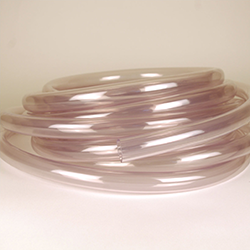Bacteria in Hoses: the Importance of Cleaning and Regular Replacement
Posted by Matteo Lahm on 17th Jan 2025
You face the ongoing and invisible battle against bacteria that can grow in your clear hoses. In this article, we will explore the various types of bacteria that can infiltrate your hoses, techniques to clean them and the importance of regular replacement.

Conceptualize your brewing setup as a medieval fortress, with your precious beer or wine guarded within its walls. Your hoses act as the drawbridge, allowing the flow of liquid in and out of your brewing vessels. However, just as a drawbridge can be a point of vulnerability for invading armies, so too can your clear tubing be a point of entry for unwanted bacterial guests.
There are several types of bacteria that can grow in hoses, including Lactobacillus, Pediococcus, and Acetobacter. These microscopic invaders can cause off-flavors, spoilage, and even the dreaded "ropy" texture in your beer or wine. While some of these bacteria can be beneficial in certain brewing styles, such as sour beers, their presence is generally undesirable and can ruin your batch.
Lactobacillus is a lactic acid bacteria that can cause a sour, tangy flavor in beer and wine. This off-flavor is often described as a yogurt-like or sour milk taste, which can be quite unpleasant when not intended. In some beer styles, such as Berliner Weisse and Gose, a controlled amount of Lactobacillus is used to achieve a desired level of tartness. However, in most other styles, its presence is considered a flaw.
Pediococcus is another lactic acid bacteria that can impart a strong, buttery off-flavor known as diacetyl. This slick, buttery taste can be reminiscent of movie theater popcorn or butterscotch, which is generally unwelcome in beer and wine. Pediococcus can also produce a ropey, viscous texture in the beverage, making it unpalatable and visually unappealing. In some cases, Pediococcus can lead to the formation of a pellicle, a thin film on the surface of the liquid, which is a clear sign of spoilage.
Acetobacter, on the other hand, is an acetic acid bacteria that can cause a sharp, vinegar-like off-flavor in beer and wine. This pungent, sour taste is often described as acetic or acidic, and can be overpowering, masking the intended flavors of the beverage. Acetobacter thrives in the presence of oxygen, so proper storage and handling techniques are crucial to prevent its growth and the resulting off-flavors.
To prevent these bacterial invaders from infiltrating your brew, it is essential for you to replace your clear tubing regularly. Over time, even with diligent cleaning and sanitizing, bacteria can form biofilms within the tubing, making them difficult to remove and increasing the risk of contamination. Additionally, hoses can become discolored, cracked, or brittle with age, further compromising their effectiveness as a barrier against bacteria.
As a general rule of thumb, you should replace your hoses at least every six months, depending on the frequency of use and the specific materials used in the tubing. If you are able, best practice is one-use only, especially if you make beer. Six feet of hose costs around $1 per foot. It is a nominal amount of money considering what could go wrong especially accounting for your time and the cost of your ingredients. Of all your tools, hoses are the most difficult to clean.
If you cannot replace your hoses as often as you would like, there are steps you can take to help them last longer that sidestep scrubbing them with long narrow brushes. After every use, mix a solution of hot water and citric acid. Mix one to two tablespoons of citric acid powder per gallon. Hot water on its own does a good job of dissolving residues but with the addition of citric acid, you should be able to get your hoses clean.
If you use an autosiphon, attach your hose and pump the solution through the hose for several minutes. If you use a simple racking wand, siphon the solution through your hose into another bucket.
Afterwards, repeat this process with a sulfite solution. 2-3 tablespoons per gallon will suffice. Allow your hoses to thoroughly dry and store them in a clean container. If you methodically clean your hoses after you use them, you have a much better chance of keeping them bacteria free. A common mistake is to just rinse them after use but that is when your hoses are most vulnerable. If they are not thoroughly cleaned, that bacteria will stay in there and fester making them that much harder to clean and sanitize when you need to use them again.
The invisible battle against bacteria in your home beer and wine making endeavors may seem daunting, but with proper care and attention to detail, it is a battle that you can win. With proper cleaning and regularly replacing your hoses, you can ensure that your carefully crafted brews remain free from unwanted bacterial invaders. Enjoy the fruits of your labor, knowing that you have taken the necessary steps to protect your beer and wine from the microscopic foes lurking in the shadows, or more specifically, in your hoses. Cheers!


